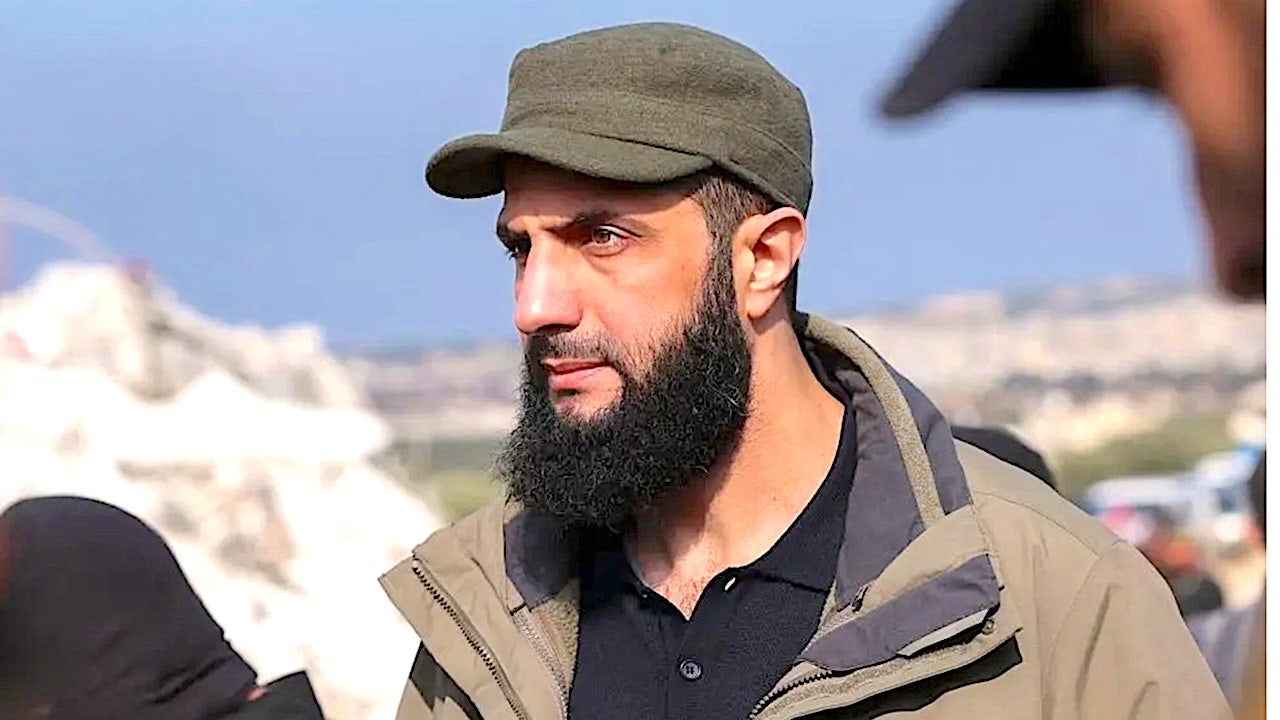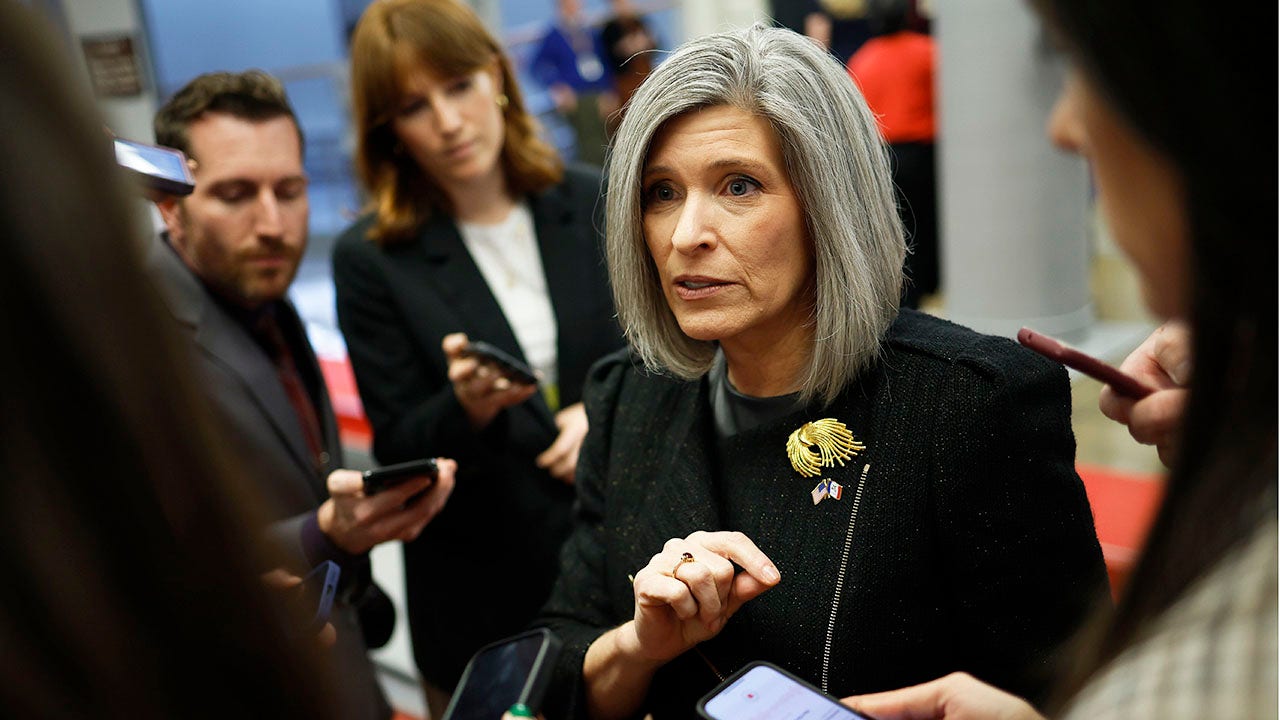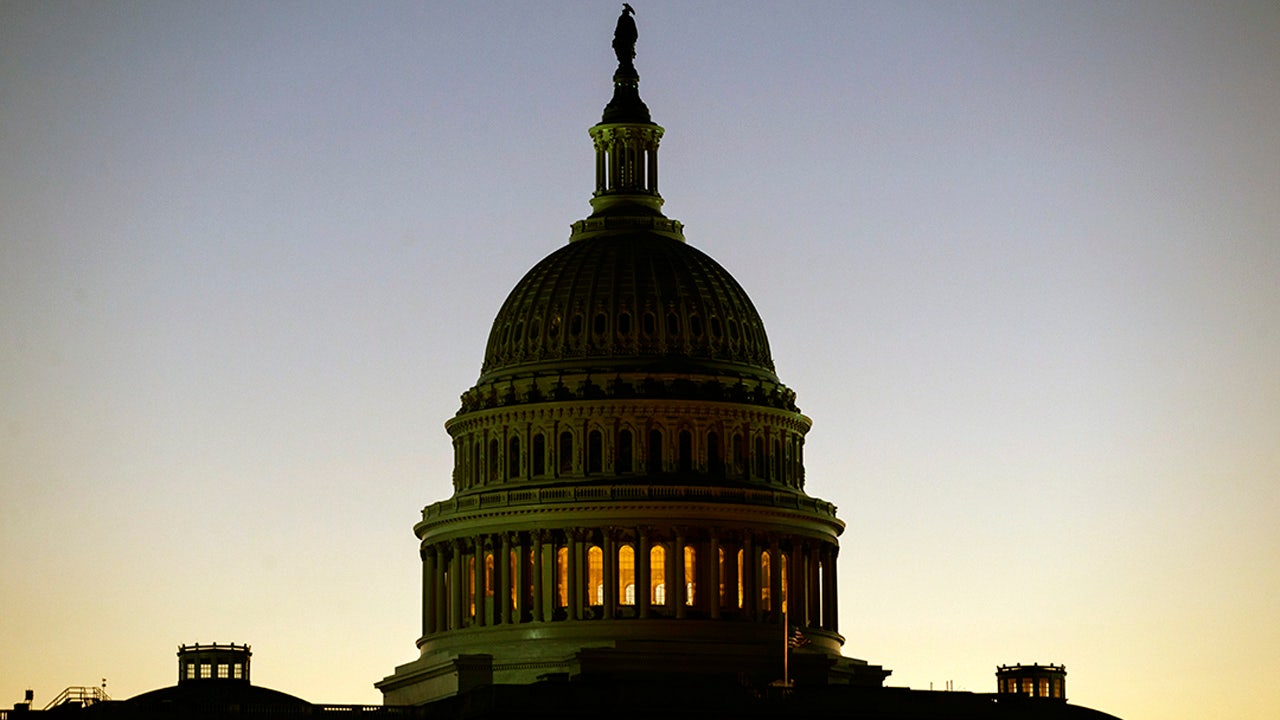Science
She’s Trying to Stay Ahead of Alzheimer’s, in a Race to the Death

Soon, Irene Mekel will need to pick the day she dies.
She’s not in any hurry: She quite likes her life, in a trim, airy house in Castricum, a Dutch village by the sea. She has flowers growing in her back garden, and there is a street market nearby where vendors greet villagers by name. But if her life is going to end the way she wants, she will have to pick a date, sooner than she might like.
“It’s a tragedy,” she said.
Ms. Mekel, 82, has Alzheimer’s disease. It was diagnosed a year ago. She knows her cognitive function is slowly declining, and she knows what is coming. She spent years working as a nurse, and she cared for her sister, who had vascular dementia. For now, she is managing, with help from her three children and a big screen in the corner of the living room that they update remotely to remind her of the date and any appointments.
In the not-so-distant future, it will no longer be safe for her to stay at home alone. She had a bad fall and broke her elbow in August. She does not feel she can live with her children, who are busy with careers and children of their own. She is determined that she will never move to a nursing home, which she considers an intolerable loss of dignity. As a Dutch citizen, she is entitled by law to request that a doctor help her end her life when she reaches a point of unbearable suffering. And so she has applied for a medically assisted death.
In 2023, shortly before her diagnosis, Ms. Mekel joined a workshop organized by the Dutch Association for Voluntary End of Life. There, she learned how to draft an advance request document that would lay out her wishes, including the conditions under which she would request what is called euthanasia in the Netherlands. She decided it would be when she could not recognize her children and grandchildren, hold a conversation or live in her own home.
But when Ms. Mekel’s family doctor read the advance directive, she said that while she supported euthanasia, she could not provide it. She will not do it for someone who has by definition lost the capacity to consent.
A rapidly growing number of countries around the world, from Ecuador to Germany, are legalizing medical assistance in dying. But in most of those countries, the procedure is available only to people with terminal illness.
The Netherlands is one of just four countries (plus the Canadian province of Quebec) that permit medically assisted death by advance request for people with dementia. But the idea is gaining support in other countries, as populations age and medical interventions mean more people live long enough to experience cognitive decline.
The Dutch public strongly supports the right to an assisted death for people with dementia. Yet most Dutch doctors refuse to provide it. They find that the moral burden of ending the life of someone who no longer has the cognitive capacity to confirm their wishes is too weighty to bear.
Ms. Mekel’s doctor referred her to the Euthanasia Expertise Center, in The Hague, an organization that trains doctors and nurses to provide euthanasia within the parameters of Dutch law and connects patients with a medical team that will investigate a request and provide assisted death to eligible patients in cases where their own doctors won’t. But even these doctors are reluctant to act after a person has lost mental capacity.
Last year, a doctor and a nurse from the center came every three months to meet with Ms. Mekel over tea. Ostensibly, they came to discuss her wishes for the end of her life. But Ms. Mekel knew they were really monitoring how quickly her mental faculties had declined. It might seem like a tea party, she said, “but I see them watching me.”
Dr. Bert Keizer is alert for a very particular moment: It is known as “five to 12” — five minutes to midnight. Doctors, patients and their caregivers engage in a delicate negotiation to time death for the last moment before a person loses that capacity to clearly state a rational wish to die. He will fulfill Ms. Mekel’s request to end her life only while she still is fully aware of what she is asking.
They must act before dementia has tricked her, as it has so many of his other patients, into thinking her mind is just fine.
“This balance is something so hard to discover,” he said, “because you as a doctor and she as your patient, neither of you quite knows what the prognosis is, how things will develop — and so the harrowing aspect of this whole thing is looking for the right time for the horrible thing.”
Ms. Mekel finds this negotiation deeply frustrating: The process does not allow for the idea that simply having to accept care can be considered a form of suffering, that worrying about what lies ahead is suffering, that loss of dignity is suffering. Whose assessment should carry more weight, she asks: current Irene Mekel, who sees loss of autonomy as unbearable, or future Irene, with advanced dementia, who is no longer unhappy, or can no longer convey that she’s unhappy, if someone must feed and dress her.
More than 500,000 of the 18 million people in the Netherlands have advance request documents like hers on file with their family doctors, explicitly laying out their wishes for physician-assisted death should they decline cognitively to a point they identify as intolerable. Most assume that an advance request will allow them to progress into dementia and have their spouses, children or caregivers choose the moment when their lives should end.
Yet of the 9,000 physician-assisted deaths in the Netherlands each year, just six or seven are for people who have lost mental capacity. The overwhelming majority are for people with terminal illnesses, mostly cancer, with a smaller number for people who have other nonterminal conditions that cause acute suffering — such as neurodegenerative disease or intractable depression.
Physicians, who were the primary drivers of the creation of the Dutch assisted dying law — not Parliament, or a constitutional court case, as in most other countries where the procedure is legal — have strong views about what they will and will not do. “Five to 12” is the pragmatic compromise that has emerged in the 23 years since the criminal code was amended to permit physicians to end lives in situations of “unbearable and irremediable suffering.”
A Shock
Ms. Mekel, petite and brisk, had suspected for some time before she received a diagnosis that she had Alzheimer’s. There were small, disquieting signs, and then one big one, when she took a taxi home one day and could not recognize a single house on the street where she had lived for 45 years, could not identify her own front door.
At that point, she knew it was time to start making plans.
She and her best friend, Jean, talked often about how they dreaded the idea of a nursing home, of needing someone to dress them, get them out of bed in the morning, of having their worlds shrink to a sunroom at the end of a ward.
“When you lose your own will, and you are no longer independent — for me, that’s my nightmare,” she said. “I would kill myself, I think.”
She knows how cognition can slip away almost imperceptibly, like mist over a garden on a spring morning. But the news that she would need to ask Dr. Keizer to end her life before such losses happened came as a shock.
Her distress at the accelerated timeline is not an uncommon response.
Dr. Pieter Stigter, a geriatric specialist who works in nursing homes and also as a consultant for the Expertise Center, must frequently explain to startled patients that their carefully drawn-up advance directives are basically meaningless.
“The first thing I tell them is, ‘I’m sorry, that’s not going to happen,’” he said. “Assisted dying while mentally incompetent, it’s not going to happen. So now we’re going to talk about how we’re going to avoid getting there.”
Patients who have cared for their own parents with dementia may specify in their advance directive that they do not wish to reach the point of being bedridden, incontinent or unable to feed themselves. “But still then, if someone is accepting it, patiently smiling, it’s going to be very hard to be convinced in that moment that even though someone described it in an earlier stage, that in that moment it is unbearable suffering,” Dr. Stigter said.
The first line people write in a directive is always, “‘If I get to the point I do not recognize my children,’” he said. “But what is recognition? Is it knowing someone’s name, or is it having a big smile when someone enters your room?”
Five-to-12 makes the burden being placed on physicians morally tolerable.
“As a doctor, you are the one who has to do it,” said Dr. Stigter, a warm and wiry 44-year-old. “I’m the one doing it. It has to feel good for me.”
Conversations about advance requests for assisted death in the Netherlands are shadowed by what many people who work in this field refer to, with a wince, as “the coffee case.”
In 2016, a doctor who provided an assisted death to a 74-year-old woman with dementia was charged with violating the euthanasia law. The woman had written an advance directive four years earlier, saying she wished to die before she needed to enter a care home. On the day her family chose, her doctor gave her a sedative in coffee, and then injected a stronger dose. But during the administration of the medication that would stop her heart, the woman awoke and resisted. Her husband and children had to hold her down so the doctor could complete the procedure.
The doctor was acquitted in 2019. The judge said the patient’s advance request was sufficient basis for the doctor to act. But the public recoil at the idea of the woman’s family holding her down while she died redoubled the determination of Dutch doctors to avoid such a situation.
A Day Too Late
Dr. Stigter never takes on a case assuming he will provide an assisted death. Cognitive decline is a fluid thing, he said, and so is a person’s sense of what is tolerable.
“The goal is an outcome that reflects what the patient wants — that can evolve all the time,” he said. “Someone can say, ‘I want euthanasia in the future’, but actually when the moment is there, it’s different.”
Dr. Stigter found himself explaining this to Henk Zuidema a few years ago. Mr. Zuidema, a tile setter, had early-onset Alzheimer’s at 57. He was told he would no longer be permitted to drive, and so he would have to stop working and give up his main hobby, driving a vintage motocross bike with friends.
A gruff, stoic family man, Mr. Zuidema was appalled at the idea of no longer providing for his wife or caring for his family, and he told them he would seek a medically assisted death before the disease left him totally dependent.
His own family doctor was not willing to help him die, nor was anyone in her practice, and so his daughter Froukje Zuidema found the Expertise Center. Dr. Stigter was assigned to his case and began driving 30 minutes from his office in the city of Groningen every month to visit Mr. Zuidema at his home in the farming village of Boelenslaan.
“Pieter was very clear: ‘You have to tell me when,’” Ms. Zuidema said. “And that was very hard, because Dad had to make the decision.”
When he grasped that the disease might impair his judgment, and thus cause him to overestimate his mental competence, Mr. Zuidema quickly settled on a plan to die within months. His family was shocked, but for him the trade-off was clear: “Better a year too early than a day too late,” he would say.
Dr. Stigter pushed Mr. Zuidema to define what, exactly, his suffering would be. “He would say, ‘Why is it so bad to get old like that?’” Ms. Zuidema recalled. “‘Why is it so bad to go to a nursing home?’” She said the doctor would tell her father, “ ‘Your idea of suffering is not the same as mine, so help me understand why this is suffering, for you.’ “
Her reticent father struggled to explain, and finally put it in a letter: “I don’t want to lose my role as a husband and a father, I do not want to be unable to help people any longer … Suffering would be if I could no longer be alone with my grandchildren because people did not trust me any longer: even this thought makes me crazy … Do not be misled by a moment in which I look happy but instead look back at this moment when I am with my wife and children.’”
The progress of dementia is unpredictable, and Mr. Zuidema did not experience a rapid decline. In the end, Dr. Stigter visited each month for a year and a half, and the two men developed a relationship of trust, Ms. Zuidema said.
Dr. Stigter provided a medically assisted death in September 2022. Mr. Zuidema, then 59, was in a camp bed near the living room window, his wife and children at his side. His daughter said she sees Dr. Stigter “as a real hero.” She has no doubt her father would have died by suicide even sooner, had he not been confident he could receive an assisted death from his doctor.
Still, she is wistful about the time they didn’t have. If the advance directive had worked as defined in the law — if there had been no fear of missing the moment — her father might have had more months, more time sitting on the vast green lawn between their houses and watching his grandchildren kick a soccer ball, more time with his dog at his feet, more time sitting on a riverbank with his grandson and a lazy fishing line in the water.
“He would have stayed longer,” Ms. Zuidema said.
Her sense that her father’s death was rushed does not outweigh her gratitude that he had the death he wanted. And her feeling is widely shared among families, according to research by Dr. Agnes van der Heide, a professor of end-of-life care and decision making at Erasmus Medical College, University Medical Center Rotterdam.
“The large majority of the Dutch population feel safe in the hands of the doctor, with regards to euthanasia, and they very much appreciate that the doctor has a significant role there and independently judges whether or not they think that ending of life is justifiable,” she said.
For five to 12 to work, doctors should know their patients well and have time to track changes in their cognition. As the public health system in the Netherlands is increasingly strained, and short of family practitioners, that model of care is becoming less common.
Ms. Mekel’s physician, Dr. Keizer, said his lengthy visits to patients were possible only because he is mostly retired and not in a hurry. (In addition to his half-time practice, he writes regular op-eds for Dutch newspapers and comments on high-profile cases. He is a bit of an assisted-dying celebrity, and, Ms. Mekel confided, the other older women at the right-to-die workshops were envious when they learned that he had been assigned as her physician.)
Now that he is clear on her wishes, the tea parties are paused; he will resume the visits when her children tell him there has been a significant change in her awareness or ability to function — when they feel that five to 12 is close.
An Intolerable Price
Ms. Mekel is haunted by what happened to her best friend, Jean, who, she said, “missed the moment” for an assisted death.
Although Jean was determined to avoid moving to a nursing home, she lived in one for eight years. Ms. Mekel visited her there until Jean became unable to carry on a conversation. Ms. Mekel continued to call her and sent emails that Jean’s children read to her. Jean died in the nursing home in July, at 87.
Jean is the reason Ms. Mekel is willing to plan her death for sooner than she might like.
Yet Jean’s son, Jos Van Ommeren, is not sure that Ms. Mekel understands her friend’s fate correctly. He agrees that his mother dreaded the nursing home, but once she got there, she had some good years, he said. She was a voracious reader and devoured a book from the residence library each day. She had loved sunbathing all her life, and the staff made sure she could sit in the sun and read for hours.
Most of the last years were good years, Mr. Van Ommeren said, and to have those, it was worth the price of giving up the assisted death she had requested.
For Ms. Mekel, that price is intolerable.
Her youngest son, Melchior, asked her gently, not long ago, if a nursing home might be OK, if by the time she got there she wasn’t so aware of her lost independence.
Ms. Mekel shot him a look of affectionate disgust.
“No,” she said. “No. It wouldn’t.”
Veerle Schyns contributed reporting from Amsterdam.
Audio produced by Tally Abecassis.

Science
Video: SpaceX Rocket Launches Carrying 3 Weather-Monitoring Spacecraft

new video loaded: SpaceX Rocket Launches Carrying 3 Weather-Monitoring Spacecraft
transcript
transcript
SpaceX Rocket Launches Carrying 3 Weather-Monitoring Spacecraft
Two of the spacecraft are for NASA and one is for the National Oceanic and Atmospheric Administration.
-
“Three, two, one — engines full power and liftoff. Go, Falcon. Go IMAP. Go SWFO-L1 and go Carruthers.” “And we are flying three new missions on a million-mile journey to track space weather.”
Science
RFK Jr. wants an answer to rising autism rates. Scientists say he’s ignoring some obvious ones

This week, the Trump administration announced that it was taking “bold action” to address the “epidemic” of autism spectrum disorder — starting with a new safety label on Tylenol and other acetaminophen products that suggests a link to autism. The scientific evidence for doing so is weak, researchers said.
Health and Human Services Secretary Robert F. Kennedy Jr. said federal officials “will be uncompromising and relentless in our search for answers” and that they soon would be “closely examining” the role of vaccines, whose alleged link to autism has been widely discredited.
Kennedy has long argued that rising diagnoses among U.S. children must mean more exposure to some outside influence: a drug, a chemical, a toxin, a vaccine.
“One of the things that I think that we need to move away from today is this ideology that … the autism prevalence increase, the relentless increases, are simply artifacts of better diagnoses, better recognition or changing diagnostic criteria,” Kennedy said in April.
Kennedy is correct that autism spectrum disorder rates have risen steadily in the U.S. since the U.S. Centers for Disease Control began tracking them, from 1 in 150 8-year-olds in 2000, to 1 in 31 in 2022, the most recent year for which numbers are available.
But physicians, researchers and psychologists say it is impossible to interpret this increase without acknowledging two essential facts: The diagnostic definition of autism has greatly expanded to include a much broader range of human behaviors, and we look for it more often than we used to.
“People haven’t changed that much,” said Alan Gerber, a pediatric neuropsychologist at Children’s National Hospital in Washington, D.C., “but how we talk about them, how we describe them, how we categorize them has actually changed a lot over the years.”
Defining ‘autism’
The term “autism” first appeared in the scientific literature around World War II, when two psychiatrists in different countries independently chose that word to describe two different groups of children.
In 1938, Austrian pediatrician Hans Asperger used it to describe child patients at his Vienna clinic who were verbal, often fluently so, with unusual social behaviors and at-times obsessive focus on very specific subjects.
Five years later, U.S. psychiatrist Leo Kanner published a paper about a group of children at his clinic at the Johns Hopkins Hospital in Baltimore who were socially withdrawn, rigid in their thinking and extremely sensitive to stimuli like bright lights or loud noises. Most also had limited verbal language ability.
Both Asperger and Kanner chose the same word to describe these overlapping behaviors: autism. (They borrowed the term from an earlier psychiatrist’s description of extreme social withdrawal in schizophrenic patients.)
This doesn’t mean children never acted this way before. It was just the first time doctors started using that word to describe a particular set of child behaviors.
For the next few decades, many children who exhibited what we understand today to be autistic traits were labeled as having conditions that have ceased to exist as formal diagnoses, like “mental retardation,” “childhood psychosis” or “schizophrenia, childhood type.”
Autism debuted as its own diagnosis in the 1980 third edition of the Diagnostic and Statistical Manual of Mental Disorders, the American Psychiatric Assn.’s diagnostic bible. It described an autistic child as one who, by the age of 2½, showed impaired communication, unusual responses to their environment and a lack of interest in other people.
As the decades went on, the DSM definition of autism broadened.
The fourth edition, published in 1994, named additional behaviors: impaired relationships, struggles with nonverbal communication and speech patterns different from those of non-autistic, or neurotypical, peers.
It also included a typo that would turn out to be a crucial driver of diagnoses, wrote cultural anthropologist Roy Richard Grinker in his book “Unstrange Minds: Remapping the World of Autism.”
The DSM’s printed definition of autism included any child who displayed impairments in social interaction, communication “or” behavior. It was supposed to say social interaction, communication “and” behavior.
The error went uncorrected for six years, and the impact appeared profound. In 1995 an estimated 1 in every 500 children was diagnosed with autism. By 2000, when the CDC formally began tracking diagnoses (and the text was corrected), it was 1 in every 150.
Reaching underserved communities
In 2007, the American Academy of Pediatrics recommended for the first time that all children be screened for autism between the ages of 18 and 24 months as part of their regular checkups. Prior to that, autism was diagnosed somewhat haphazardly. Not all pediatricians were familiar with the earliest indicators or used the same criteria to determine whether a child should be further evaluated.
Then in 2013, the fifth edition of the DSM took what had previously been four separate conditions — autistic disorder, Asperger’s disorder, childhood disintegrative disorder and pervasive developmental disorder — and collapsed them all into a single diagnosis: autism spectrum disorder.
The diagnostic criteria for ASD included a broad range of social, communication and sensory interpretation differences that, crucially, could be identified at any time in a child’s life. The term was no longer limited only to children whose development lagged noticeably behind that of their peers.
Since that definition was adopted, U.S. schools have become more proactive about referring a greater range of children for neurodevelopmental evaluations. The new DSM language also helped educators and clinicians better understand what was keeping some kids in disadvantaged communities from thriving.
“In the past, [autism was] referred to as a ‘white child’s disability,’ because you found so few Black and brown children being identified,” said Shanter Alexander, an assistant professor of school psychology at Howard University. Children of color who struggled with things like behavioral disruptions, attention deficits or language delays, she said, were often diagnosed with intellectual disabilities or behavioral disorders.
In a sign that things have shifted, the most recent CDC survey for the first time found a higher prevalence of autism in kids of color than in white children: 3.66%, 3.82% and 3.30% for Black, Asian and Latino children, respectively, compared with 2.77% of white children.
“A lot of people think, ‘Oh, no, what does this mean? This is terrible.’ But it’s actually really positive. It means that we have been better at diagnosing Latino children [and] other groups too,” said Kristina Lopez, an associate professor at Arizona State University who studies autism in underserved communities.
The severity issue
An autism diagnosis today can apply to people who are able to graduate from college, hold professional positions and speak eloquently about their autism, as well as people who require 24-hour care and are not able to speak at all.
It includes people who were diagnosed when they were toddlers developing at a noticeably different pace from their peers, and people who embraced a diagnosis of autism in adulthood as the best description of how they relate to the world. Diagnoses for U.S. adults ages 26 to 34 alone increased by 450% between 2011 and 2022, according to one large study published last year in the Journal of the American Medical Assn.
Kennedy was not correct when he said in April that “most cases now are severe.”
A 2016 review of CDC data found that approximately 26.7% of 8-year-olds with autism had what some advocates refer to as “profound autism,” the end of the spectrum that often includes seriously disabling behaviors such as seizures, self-injurious behavior and intellectual disability.
The rate of children with profound autism has remained virtually unchanged since the CDC started tracking it, said Maureen Durkin, a professor of population health science and pediatrics at the University of Wisconsin-Madison. Indeed, the highest rate of new diagnoses has been among children with mild limitations, she said.
For many researchers and advocates, the Trump administration’s focus on autism has provoked mixed emotions. Many have lobbied for years for more attention for this condition and the people whose lives it affects.
Now it has arrived, thanks to an administration that has played up false information while cutting support for science.
“They have attempted to panic the public with the notion of an autism epidemic as a threat to the nation, when no such epidemic actually exists — rather, more people are being diagnosed with autism today because we have broader diagnostic criteria and do a better job detecting it,” said Colin Killick, executive director of the Autistic Self Advocacy Network. “It is high time that this administration stops spreading misinformation about autism, and starts enacting policies that would actually benefit our community.”
This article was reported with the support of the USC Annenberg Center for Health Journalism’s National Fellowship’s Kristy Hammam Fund for Health Journalism.
Science
Forest Service reverses decades-long ban, allows wildfire firefighters to use N95 masks

The U.S. Forest Service has announced it is reversing a ban on federal firefighters wearing masks, and will give crews protective N95s as they battle increasingly intense fires across the nation.
For decades, the agency argued their use made firefighters vulnerable to heat exhaustion.
Other wildfire-prone nations, such as Canada, Greece and Australia, provide their firefighters with masks to prevent lung damage and smoke-related diseases, including cancer and organ failure — and have not seen increases in heat stroke among the crews.
The policy will have little bearing on local and regional urban firefighters, such as those in Los Angeles and Los Angeles County.
“We are actually encouraged to wear them,” said Jonathan Torres, engineer and spokesman for the Los Angeles County Fire Department.
“There are chemicals that are unknown to us that are part of our work,” as buildings and infrastructure burn, he said. Masks provide some protection against harmful smoke particles and chemicals released when plastics, upholstery and synthetic building materials burn.
Earlier this week, the forest agency announced it has stockpiled roughly 80,000 N95 masks and will include them as part of the equipment they provide for large fires.
The decision came following a series of New York Times reports that detailed the Forest Service’s decades-long refusal to require, or even offer, masks to its crews, despite recommendations from state and federal health agencies, and a growing body of evidence that wildfire smoke is harming firefighter health.
“To provide masks, and even require masks, is an implicit admission of the health hazards of smoke,” said Timothy Ingalsbee, executive director of Firefighters United for Safety, Ethics and Ecology, an organization that promotes the health and safety of wildland firefighters.
Ingalsbee and others say the Forest Service’s reluctance to encourage mask wearing was probably motivated by concern it would be admitting that smoke poses dangers and risks to its crews.
Research shows that firefighters have a 9% higher risk of getting a cancer diagnosis than the general public, and 14% higher risk of dying from cancer. Crews may be exposed to smoke and other toxins believed to cause cancer, such as benzene, phenols and heavy metals, while fighting fires.
Federal lawmakers are now working on safety legislation to protect federal and contract wildland firefighters, and have sent a series of letters to the Forest Service criticizing what they call its decades-long neglect.
Reports suggest that “that federal agencies are neglecting their duty to protect the health of wildland firefighters,” wrote Reps. Jared Huffman (D-San Rafael), Maxine Dexter (D-Ore.) and Joe Neguse (D-Colo.) in a letter to Forest Service chief Tom Schultz. “Neglecting the health of current firefighters will make future recruitment harder and leave our communities vulnerable.”
On Tuesday, they grilled Schultz at a House oversight meeting.
Huffman urged Schultz to warn workers about the dangers of smoke exposure: “Chief, do you feel like the Forest Service is doing everything that it can to make the safety risk of smoke inhalation known to firefighters?”
Gov. Gavin Newsom and the California Department of Forestry and Fire Protection also announced Tuesday that the state will be funding research designed to examine how smoke and other occupational exposures may increase cancer risk in firefighters.
The research, which includes a collaboration among scientists and experts at UCLA, UC Davis and Cal Fire, is backed by nearly $9.7 million in state funding and will include 3,500 firefighters from departments across the state over a two-year period.
The study comes at a time when the Trump administration has made drastic cuts to cancer research.
“It’s California at our best: our world-class public universities teaming up with the women and men who put their lives on the line to protect others — all in an effort to improve health outcomes for all,” Newsom said in a statement.
The study will include a focus on the exposures and biological changes that occurred in firefighters who responded to the Eaton and Palisades fires in Los Angeles.
Ingalsbee said that masks are not always appropriate when fighting fires — there are activities, such as traipsing up and down steep terrain when a N95 mask can get gummed up with debris and sweat and make it difficult for a firefighter to breathe.
However, he said the vast majority of the time, when firefighters are at their base camps, where it’s often smoky, or driving along dusty, sandy roads, masks could go a long way to protect their lungs, reducing exposure.
“There are times when masks are unsuitable and firefighters overheat and they are uncomfortable,” he said. “But there’s a lot of times when they’d be very useful in limiting their exposure. And maybe could save some lives.”
-

 Finance5 days ago
Finance5 days agoReimagining Finance: Derek Kudsee on Coda’s AI-Powered Future
-

 Business1 week ago
Business1 week agoHow Nexstar’s Proposed TV Merger Is Tied to Jimmy Kimmel’s Suspension
-
North Dakota5 days ago
Board approves Brent Sanford as new ‘commissioner’ of North Dakota University System
-
World1 week ago
Russian jets enter Estonia's airspace in latest test for NATO
-

 Crypto4 days ago
Crypto4 days agoTexas brothers charged in cryptocurrency kidnapping, robbery in MN
-

 World4 days ago
World4 days agoSyria’s new president takes center stage at UNGA as concerns linger over terrorist past
-

 Technology4 days ago
Technology4 days agoThese earbuds include a tiny wired microphone you can hold
-

 Culture4 days ago
Culture4 days agoTest Your Memory of These Classic Books for Young Readers




















